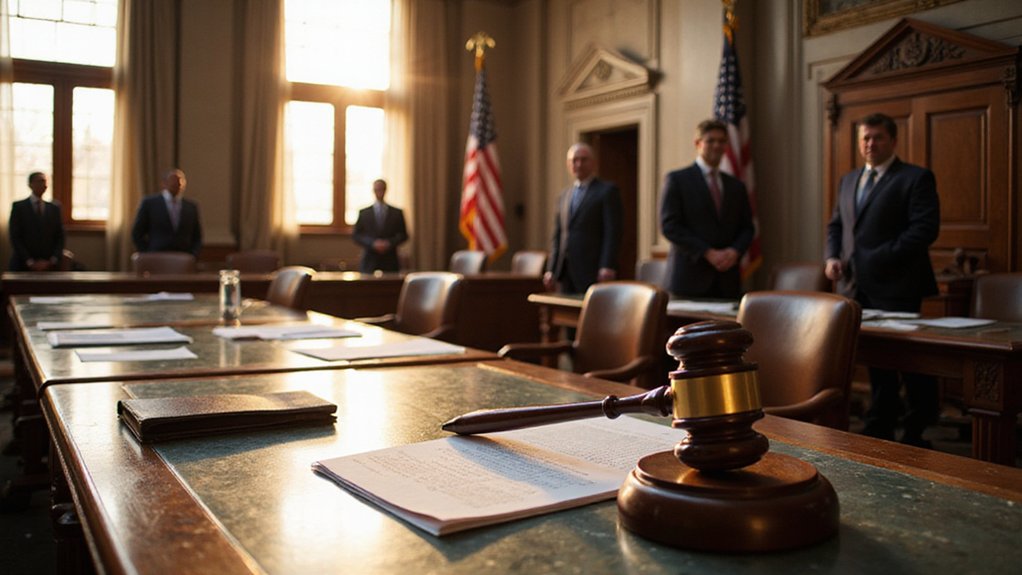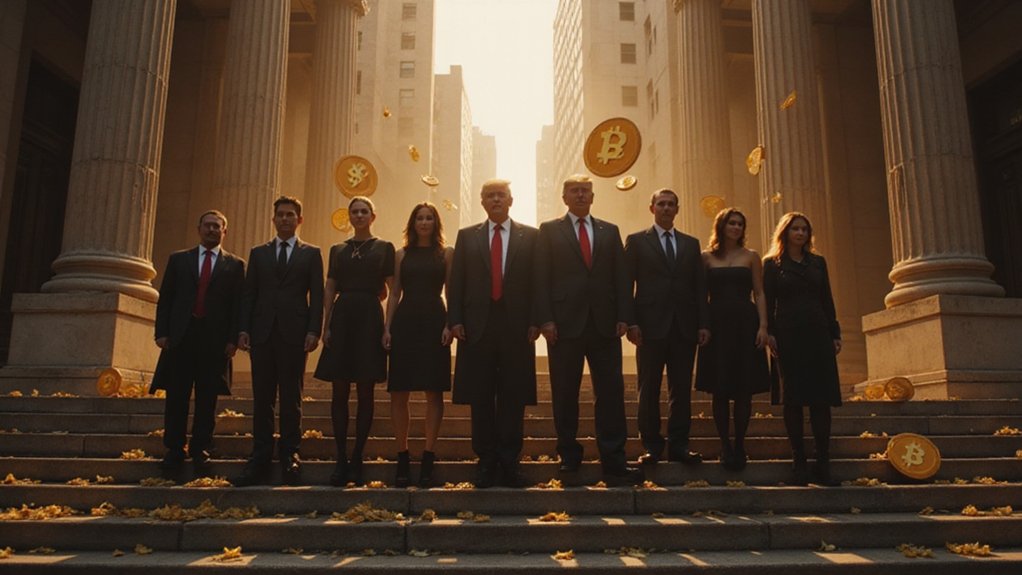The Senate has thrust stablecoins into the regulatory spotlight with the passage of the GENIUS Act on June 17, 2025, marking a watershed moment for digital assets that have operated in something of a legal gray zone despite their $150 billion market presence.
The bipartisan 68-30 vote demonstrates rare congressional unity on cryptocurrency matters—a phenomenon roughly as common as finding consensus on pizza toppings in a newsroom. This represents a dramatic turnaround from the May 2025 cloture vote failure that initially stalled legislative progress.
The Senate’s 68-30 stablecoin vote achieved that rarest of Washington phenomena: actual bipartisan agreement on crypto regulation.
The legislation establishes a three-tiered framework for stablecoin issuers: subsidiaries of insured depository institutions, federal-qualified nonbank entities regulated by the OCC, and state-qualified issuers.
Federal oversight kicks in at the $10 billion outstanding issuance threshold, creating what amounts to a regulatory escape hatch for smaller players (assuming their state frameworks pass federal muster, which many currently don’t).
Treasury projections suggest this regulatory clarity could propel the U.S. dollar stablecoin market to $2 trillion within a decade—an eightfold increase that would make even the most optimistic venture capitalist pause mid-pitch. The bill was initially introduced in the Senate on February 4, 2025, with bipartisan sponsorship from Mr. Hagerty, Mr. Scott of South Carolina, Mrs. Gillibrand, and Ms. Lummis.
The framework specifically targets payment stablecoins backed by fiat reserves and government securities, effectively giving algorithmic stablecoins the regulatory equivalent of a “thanks, but no thanks” card.
The compliance requirements read like a financial regulator’s fever dream: backing requirements limited to U.S. dollars and Treasurys, enhanced Bank Secrecy Act obligations, and 120-day application response timelines that actually hold regulators accountable. Established issuers like Paxos, which operates as a regulated trust company chartered in New York since 2015, already maintain similar compliance standards through their existing regulatory frameworks.
The 12-month safe harbor provision for pending applications suggests lawmakers recognize the chaos that typically accompanies regulatory changes.
Market reaction proved predictably exuberant, with crypto stocks surging over 50% following passage—Circle and other major issuers presumably celebrating with champagne that costs less than a single Bitcoin transaction fee during network congestion.
The legislation now advances to the House, where it enjoys White House backing and the kind of bipartisan momentum that makes seasoned political observers check their calendars twice.
Whether this federal framework will truly “dismantle crypto norms” remains to be seen, though it certainly represents the most thorough attempt at bringing stablecoins under traditional financial supervision—complete with all the regulatory complexity that entails.









